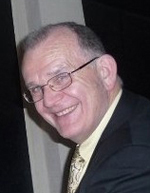Callas in Calary
George Fleeton© 2013
[caption id="attachment_32481" align="alignleft" width="150"] George Fleeton[/caption]
George Fleeton[/caption]
On 5 July the Music in Calary initiative continued with a special prom-style musical tribute to Maria Callas marking, in anticipation, the 90th anniversary of her birth in New York (2 December 1923).
Calary is part of a rural Church of Ireland parish, just south of the Great Sugar Loaf Mountain, in north-east County Wicklow, off the road to Glendalough, about forty kilometres from Dublin.
In the course of a glorious summer’s evening, a capacity audience heard soprano Norah King, accompanied on piano by Anthony Byrne, perform seven arias which had been recorded by Callas at different stages of her all-too-short career.
The arias were interwoven with a big screen, stereo presentation of four video clips taken from the few black and white television broadcasts that have survived, from Paris (1958 and 1965), Hamburg (1962) and London (1964).
The arias chosen for live performance on the night were thematically grouped as follows, and spread across the two-hour event:
Una voce poca fà (Rossini) and Porgi amor (Mozart);
Près des remparts de Séville (Bizet) and Adieu, notre petite table (Massenet);
Sì, mi chiamano Mimì and Signore, ascolta! (Puccini)
The final aria was a little tribute to Verdi – Caro nome – to note his bicentenary (October 9th, 1813).
The four Callas television clips, laced through the evening’s live music, featured concert performances of:
Pleurez, pleurez mes yeux (Massenet);
Ah, non credea mirarti (Bellini);
D’amor sull’ali rosee/Miserere (Verdi); and part of
Tosca, act 2 (Puccini).
Here are some of the key points shared with the audience, in the course of the producer/presenter’s commentary on that music:
-‘When Callas sang and acted it was with her whole soul: she mined through to the essence of the music dramatically, and then interpreted it lyrically, in ways not previously witnessed on stage nor rarely surpassed since.
-‘To experience her performing meant you could not take your eyes off her, you sat forward in your seat and her voice resonated in your head for days afterwards.
-‘Unlike today’s show-business, red carpet starlet sopranos, Callas had to treat all her stage performances as battles with sceptical publics whom she knew could turn against very quickly – and they did.
-‘As a consummate musician, she had incredible insights into the music and its composers’ imaginations, and insatiable curiosity about the roles she chose to perform.
-‘These powerful attributes, nurtured by Serafin, Visconti and Zeffirelli, compensated for her very fractured and incomplete primary and secondary schooling, in New York and in Athens respectively.
-‘She disliked false praise, always knew when she hadn’t sung her best, and readily admitted that she didn’t have the most beautiful voice in the world.
-‘There were so many roles that Callas never performed on stage; her encounters with Mozart’s music, for example, were minimal – good music to warm the voice with, she was heard to say.
-‘ So what composer choices did she make and what was it about her singing, in the operas she finally chose to interpret, that still transcends that of every other soprano in the history of recorded opera?
-‘Callas never sang a complete role on stage in French and that made her choices of French arias, on the concert platform or in the recording studio, all the more interesting.
-‘Some of Callas’ formidable contemporaries included Tebaldi, Sutherland, Sills, Nilsson and de los Angeles; each of these five ladies lived into the 21st century; Callas died 36 years ago.
-‘As far as we know no legitimates film or television tape exists of any of her 600 stage performances in the 40 operatic roles which she sang professionally between La Gioconda (Verona, 1947) and Tosca (London, 1965).
-‘However, a handful of her 130 concert performances were recorded, for black and white television, in Paris, Hamburg and London, and these are priceless evidence of exceptional events and of her voices of many colours.
-‘Fortunately, and thanks to EMI Classics, there are many studio recordings available today on CD – curiously there is little or no Handel, Gluck or Mozart; but lots of Rossini, Bellini and Donizetti (some of whose operas Callas rescued from oblivion), plenty of Verdi and Puccini, although she gave Wagner and 20th century opera a wide berth.
-‘Paris, and its opera house, was the last major city in which Callas sang several of her better-established roles; it was her ultimate artistic conquest, in 1958, and it became her final home until her death, at 53, in 1977.
-‘Puccini’s last opera Turandot (1926), which she only sang on stage in the late 1940s, while one of her early successes, was a triumph earned at considerable cost, taken with brutal Wagner roles which she sang at that time, on bad advice and too early in her career, her mid-twenties.
-‘These taxing roles exacted a heavy price on her still developing voice and, when she reached La Scala, Covent Garden and the Metropolitan in the 1950s, perceptive observers noticed that her instrument had already been compromised.
-‘In the end there were just a handful of signature roles which carved Callas indelibly into the marble of European culture, performances which set the bar of interpretation so high that no one has ever crossed it since without knocking it over: Violetta, Lucia, Medea, Tosca, Norma.
]]>

























